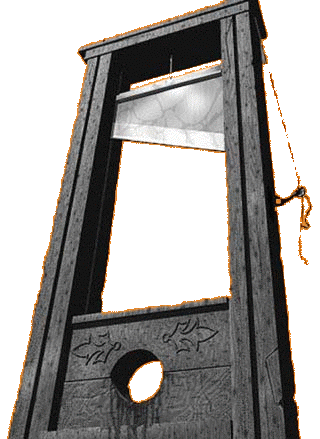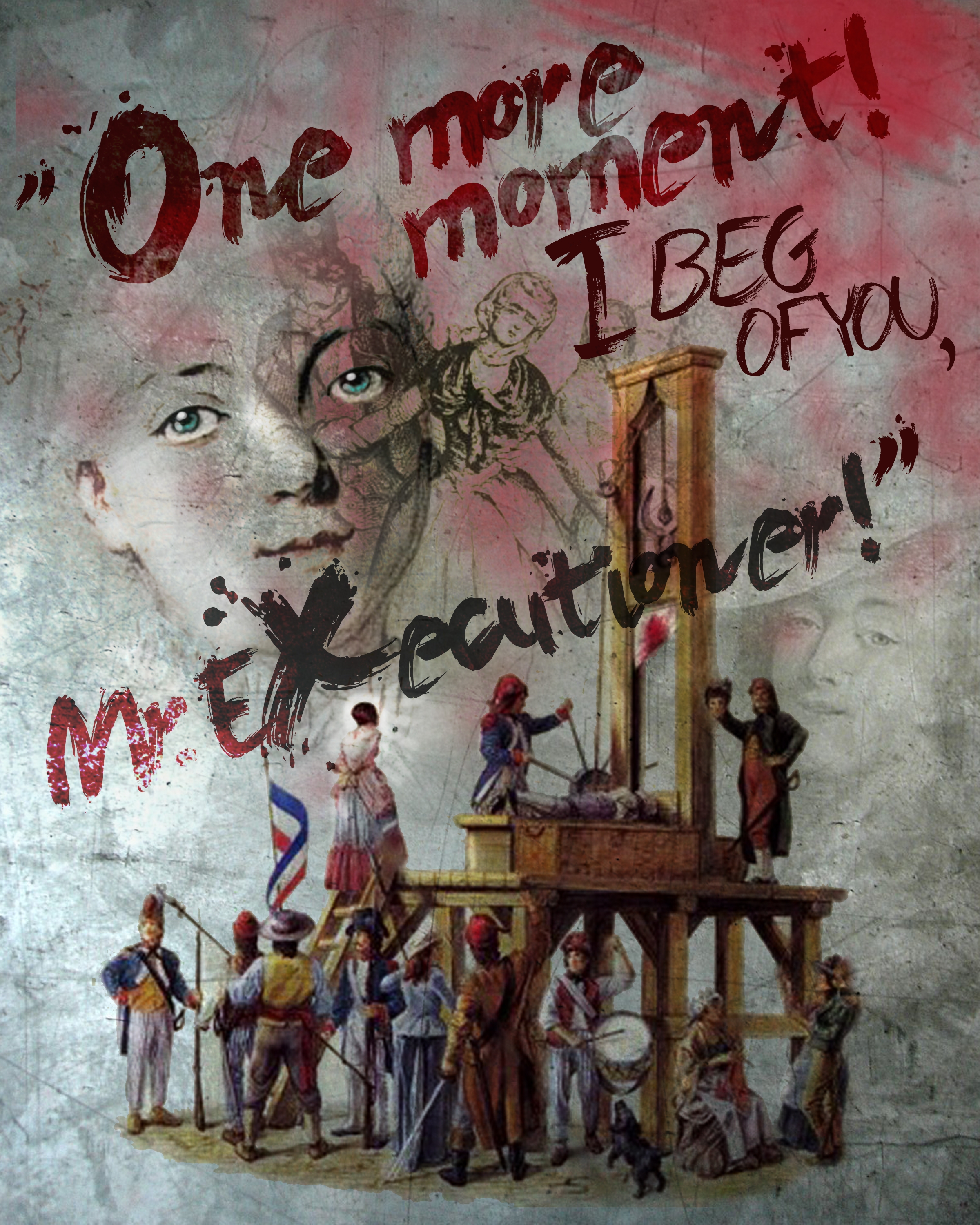Good Executions? December 10, 2012
Author: Beach Combing | in : Ancient, Contemporary, Medieval, Modern , trackbackIs there such a thing as a ‘good execution’: after all the extinction of human life should never or almost never be a cause for celebration? Well, historians have used the phrase, in the past generation – though it has older antecedents – to refer to the extent to which the criminal cooperates with his or her execution. This might sound stupid. But think about it. You have to decapitate Princess Latifa and she screams all the way to the place of execution. Then when she is there she refuses to put her head down on the block . Eventually you have to get someone to drag her hair out and hold her legs in place. The chances that you are going to need three or four blows to remove the head increases… The solemn occasion has been all but ruined.
In fact, most executions through history have been ‘good executions’. The criminal cooperates with the executioner, (i) because they know that struggling will just prolong suffering: think of a witch who is going to be burnt but that who was offered the promise of being strangled first should she ‘behave’. There is also (ii) the machismo that says I can face death without trembling: when Charles I was executed he was worried about how few clothes he had on because he did not want the crowd to think that he was shivering with fear. Then there is (iii) also the very human feeling of not wanting to give the SOB with the needle the satisfaction of tears or screams. Just possibly, in some cases, there is also (iv) a sense that you don’t want to make the executioner’s job more difficult than it already is. This again might sound foolish but it is borne out by a surprising number of cases: e.g. Marie-Antoinette apologising with obvious sincerity for treading on the executioner’s foot while on the scaffold.
Authorities through histories have done everything in their power to make executions ‘good’ rather than ‘bad’ because good executions make for better spectacles. In ancient Rome criminals were, sometimes, executed in the games playing roles: e.g. a man dresses up as Orpheus strumming his harp and then has wild animals set on him (another post another day). Quite how the Roman authorities persuaded criminals to go along with these kinds of shows is a nice question. Perhaps they threatened worse outcomes, perhaps prisoners were promised numbing potions… In the middle ages and in modern times, the authorities have very capably provided ‘comforters’, priests or even religious pictures for the executed to listen to or to stare at while they were being led away to die. As the public execution disappeared then these matters became less important: the State does not particularly care if a prisoner kicks and shouts while no one but the executioner is watching. Though the United States has retained a kind of public execution in its viewing chambers, hence the drama of ‘last words‘ and the like.
Beach was moved though just recently to come across some examples of bad executions where the person in question struggled in an ‘unseemly’ fashion. Take Mme du Barry a ‘whore’ who was executed in the Terror in France 7 December 1793. MdB was worth, it goes without saying, a hundred of her persecutors: it is difficult to be sufficiently dismissive of the human sewage who ran continental Europe’s first totalitarian experiment. She was, in fact, a fully-paid up member of the human race who had gone out of her way, once she became wealthy, to help her poor neighbours in the country and had braved all to assist émigrés in Britain. This humanity perhaps led her to value life overly, she certainly did not go ‘gently into that good night’.
She fainted in court when it was announced that she was to be killed and had to be carried back to the prison. She first tried to bargain with the revolutionary authorities telling them she knew about some buried treasure. Next she became hysterical when the (actually quite decent) executioner, Sanson arrived: ‘No, I don’t want to go!’ She fought as her hair was cut. She wept as she was being brought towards the guillotine in the cart with other condemned, despite Sanson’s attempts to buoy her up. Sanson decided to guillotine her first, reasoning that she would suffer less and that in this way she wouldn’t have to see those she rode with suffering. Instead, she was so difficult to manage that she had to be left as it took four men three minutes to tie her to the plank. As her comrades were executed she screamed at the crowd begging them to help her. Her last words were: ‘One more moment I beg of you, Mr Executioner!’ For Beach there is something inspiring about those last words, there is much of the human condition in them.
She was, of course, soon dead with the rest but she worked, in her last minutes, a magic. The crowd that had come to laugh and hoot, a crucial part of revolutionary ‘justice’ in the Reign of Terror, first were stunned into silence and then simply fled like the curs they had become. MdB forced them to confront the pain and horror of death, particularly as in her case the death of an innocent. They had been yanked back into decency. The scene is reminiscent, in its way, of Scout confronting the lynch mob in To Kill a Mockingbird. The lesson? When it is your turn, forget dignity, honour and the rest and howl like a new born infant.
Any other bad executions: drbeachcombing AT yahoo DOT com
***
24 Dec 2012: KMH writes: The guillotine was originally put forward as an efficient, rather painless, and therefore humane way to die compared to such practices as being drawn and quartered, etc. One of its shortcomings, as you note, is the awkwardness of a struggling victim. They should have had the option of a lethal drug before execution occurred. I find it personally repugnant that in the French Revolution both men and women were put to death this way regardless of social and legal class.The women, in particular, had little legal standing, somewhat above chattel for their husbands. The differential legal treatment of the three estates was a foundation for European society – unfortunately it took a revolution and its aftermath to come to a more enlightened standard. Of course, revolutions and civil wars usually cast aside any pretence to decency more than other wars because familiarity breeds so much contempt. So, the worst atrocities of the future may happen down the street if civil insurrection rears its ugly head when the bread and circuses are not forthcoming. We could use a revolution in fully understanding revolutions. And Jaryd sent in this amazing illustration (his copyright) based on MdB’s last words. Amazing Jaryd! Thanks to you both!




